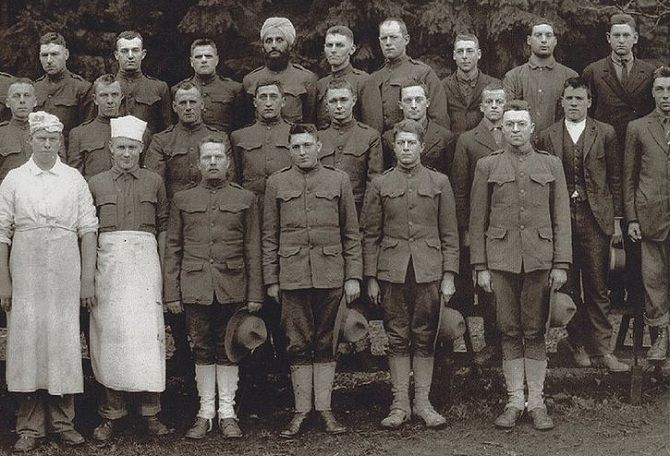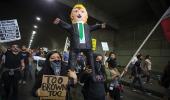Even as February 2017 will be remembered for the fight Americans put up for the rights of immigrants, South Asian Americans recall the February of 1923 when the US supreme court barred South Asians from becoming American citizens, recalls Monali Sarkar.

Much of February 2017 in the United States has been marked by a battle over immigrant rights in the wake of US President Donald Trump's executive order on immigration and the increase in the US Immigration and Customs Enforcement's 'targeted enforcement operations' against immigrants.
The January 27 executive order stopping citizens of seven Muslim majority countries from entering the US and all that followed have been an especially difficult reminder for South Asian and Japanese Americans.
It was on February 19, 1942, that then US President Franklin D Roosevelt signed the executive order 9066, authorising the internment of Japanese Americans during World War II.
And it was on February 19, 1923, that the US supreme court unanimously ruled against Bhagat Singh Thind in the United States v. Bhagat Singh Thind, quashing not just Thind's hope for citizenship, but also that of all South Asians.

'Thind, who immigrated to the United States in 1913 and even trained at Camp Lewis in Washington to fight with the US army in World War I, had begun his personal struggle for citizenship five years earlier, in 1918,' the South Asian American Digital Archive notes.
The case resulted not just in the US supreme court barring South Asians from becoming American citizens, but also ruling to 'denaturalise' those who had already done so.

SAADA.org cites an article published in The Literary Digest, 'Hindus Too Brunette To Vote Here,' to explain the racial logic behind the ruling.
Noting that 'the term "Hindu" in the article is meant as a racial classification, not a religious one,' SAADA points out how 'Thind, and many others, argued that according to the "racial science" of the day, South Asians were descendants of Indian Aryans who belonged to the "Caucasian race".'
The US supreme court disagreed.
It concluded that the Hindu 'is of such character and extent that the great body of our people instinctively recognise it and reject the thought of assimilation.'
The court also felt that the term 'Aryan' was 'inadequate to prove common racial origin.'
'One sees in these supreme court cases what George Lipsitz calls the "possessive investment in whiteness",' SAADA added, 'that is, the structural and material benefits that have historically and contemporaneously been accrued to whites in the US.'
'Thind's case, clearly, shows us the challenges and negotiations faced by South Asians during this period.'
It took over two decades, until 1946, for South Asians to win back the right of citizenship in America.
Scroll down for more stories from desis in Trump's America











 © 2025
© 2025